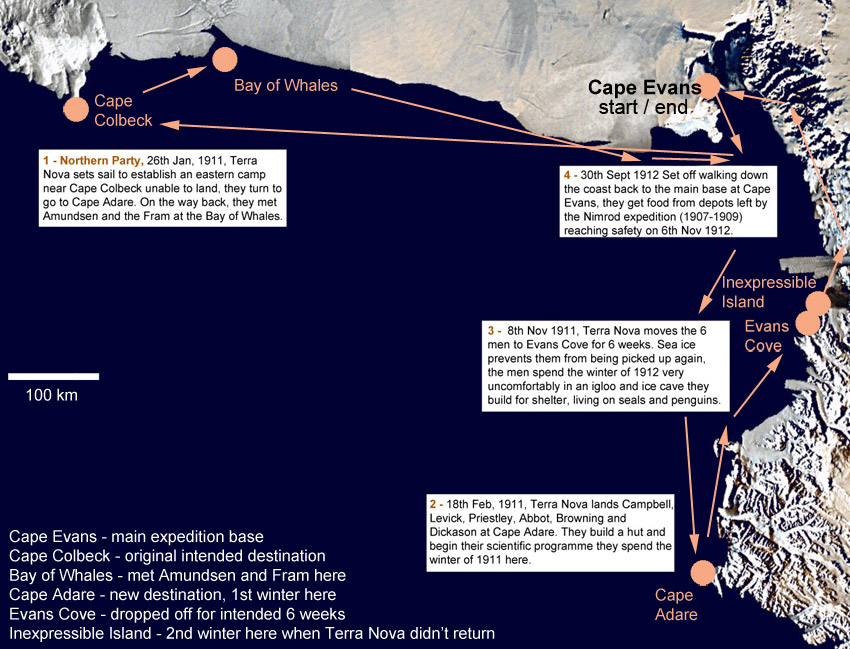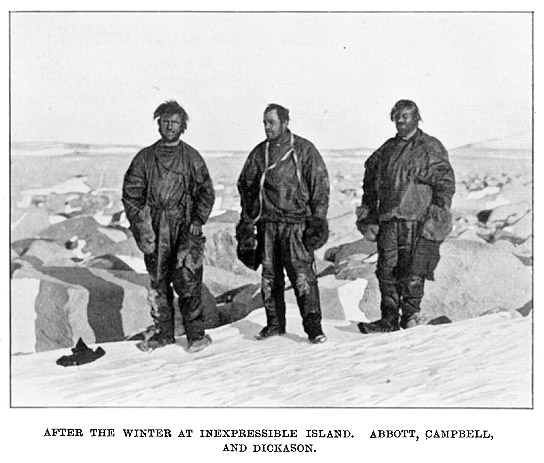The Northern Party - Captain Scott's
British Antarctic Expedition 1910-13
Terra Nova Expedition: The pole - p.1 - Preparations | The pole p.2 - Journey | The wider Terra Nova expedition | Time-line and info graphic | Crew of the Terra Nova | What went wrong for Scott to die? | What did Scott's team die of? | Race to the pole Amundsen and Scott | The Northern Party
Their first winter in a hut away from the main expedition was planned, the second was forced on them when the ship was unable to pick the party up due to heavy sea-ice, and was almost certainly the most uncomfortable winter ever spent in Antarctica.
"They ate blubber, cooked with
blubber, had blubber lamps. Their clothes and gear were
soaked with blubber, and the soot blackened them, their
sleeping-bags, cookers, walls and roof, choked their throats
and inflamed their eyes. Blubbery clothes are cold, and
theirs were soon so torn as to afford little protection
against the wind, and so stiff with blubber that they would
stand up by themselves, in spite of frequent scrapings with
knives and rubbings with penguin skins, and always there
were underfoot the great granite boulders which made walking
difficult even in daylight and calm weather."
- Cherry-Garrard
While the main stated purpose of Scott's 1910-1913 British Antarctic Expedition on board the Terra Nova was to reach the South Pole, there were also full and comprehensive scientific and exploratory programmes planned for the two winters and three summers of the expedition.
One aspect of this was to involve the landing of a small exploratory "Eastern Party" led by Lieutenant Victor Campbell to King Edward VII Land at the far eastern side of the Great Ice Barrier (the Ross Ice Shelf) over 500 miles (800 km) from Ross Island where the expedition base hut had been built. Shackleton in 1907 on the Nimrod Expedition had intended to build his base here though was unable to reach the shore due to heavy sea-ice, and so it was once again when the Terra Nova tried to reach land to drop off the Eastern Party she was unable to get close due to heavy sea-ice.
She turned around and on the way back to Ross Island called at the Bay of Whales where they met with the Fram and Roald Amundsen. Eventually the ship landed Campbell and his five companions at Cape Adare north of the expedition base on Ross Island on the 18th of Feb 1911, they thus became known as the "Northern Party".
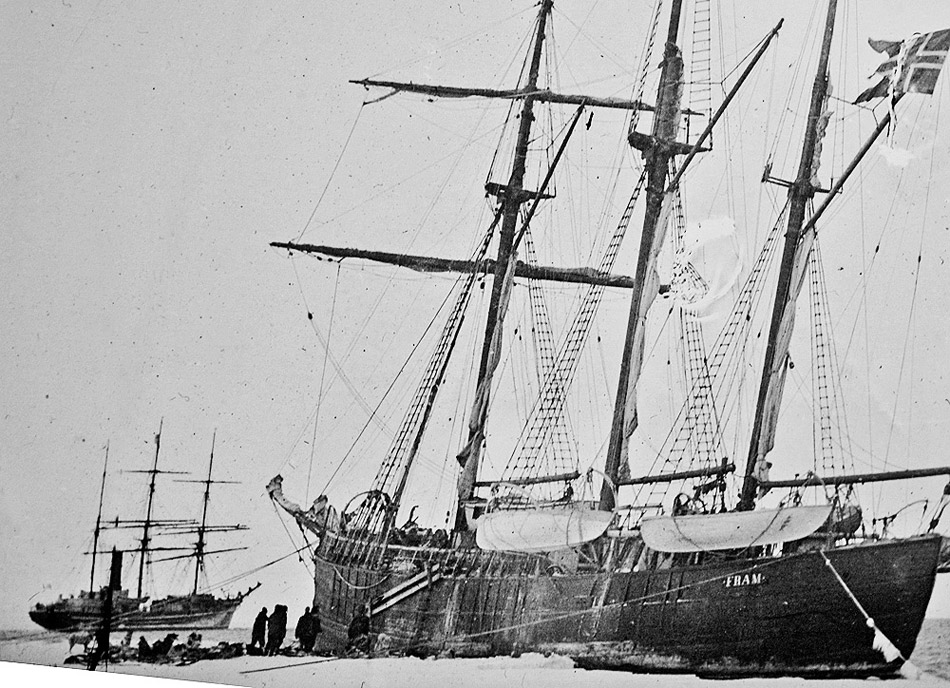 The Terra Nova (distance)
meets with the Fram in the Bay of Whales, Ross Sea, 4th Feb
1911
The Terra Nova (distance)
meets with the Fram in the Bay of Whales, Ross Sea, 4th Feb
1911
The First Winter - Cape Adare
The party went ashore, a hut was built near to Borchgrevinck's old hut (1899, 12 years earlier) and the Terra Nova left them for the winter. The first winter passed in making observations and records. When the sun reappeared in late July, the men explored the land around them by making sledging journeys. The weather at Cape Adare is particularly windy and stormy and the sea-ice which should have allowed them to explore much further afield blew out very early in mid August, neither were they able to travel inland very far as they had hoped. The worry was that they might be stranded on sea-ice that broke and floated out or that once having reached an area by travelling on sea-ice, they were unable to return if the ice broke up behind them. They did however contrive to make "kayaks" from canvas coverings over sledges which could be carried for use in emergencies. One of these kayaks was put to good use two years later when a party from the Terra Nova led by Gran went to retrieve a depot of rock samples. After 10km, they came across an open water channel about 100m wide, the boat was launched and its builder Abbott tried it out, they successfully brought back over 300kg of rock samples.
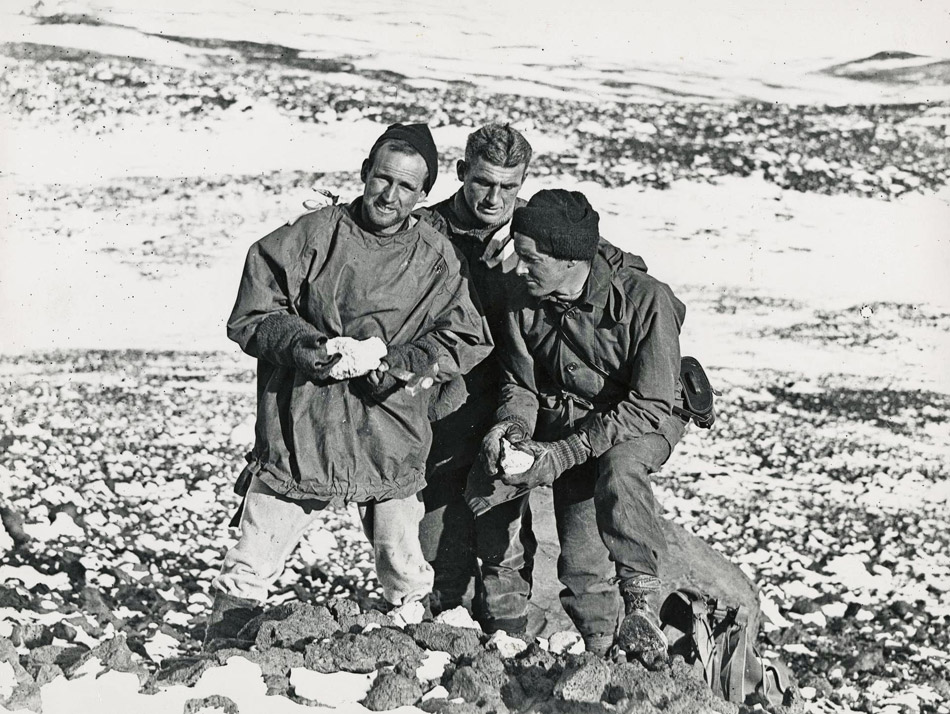 l to r, Priestley, Abbott,
Campbell looking for geological specimens in better times, in
the vicinity of Cape Adare
l to r, Priestley, Abbott,
Campbell looking for geological specimens in better times, in
the vicinity of Cape Adare
Levick made detailed studies of Adelie penguins, Cape Adare is the world's largest colony of the species, part of his studies were published initially in Greek only, due to what he considered the "depraved" sexual practices of the penguins.
All six men were involved in taking 24 hour meteorological observations, Browning made a makeshift alarm clock using a gramophone, a candle, a clock, string and a Caruso recording which was as effective as it was unpopular when it woke them in the night to take the next set of readings.
A Brief
Summer Journey
Leading to the Second Winter on Inexpressible
Island
During the second summer on January the 4th 1912 the Terra Nova arrived again and took the men 250 miles southwards down the coast, they had intended to land at a place called Wood Bay in Victoria Land but heavy pack ice prevented it. Eventually the ice opened up and they took the opportunity to land further down the coast at Evans Coves on Jan the 8th planning to spend 6 weeks on a geological and glaciological survey before the Terra Nova returned and took them the 200 miles back to the base hut on Ross Island. They took their equipment ashore with the help of the ships' crew to a depot that was soon renamed Hell's Gate because of the katabatic gales from the Antarctic interior that ravage the area.
The party of six then spent six weeks exploring the glaciers of the area collecting rock samples, surveying and recording their findings as they went. By Feb 17th, they were back at Hell's Gate just in time for it to begin to earn the name it was subsequently given. The ship didn't come back as expected around the 18th of Feb or at all that summer, heavy pack ice had prevented it from approaching close to shore. With autumn approaching and winter not far behind, the Terra Nova sailed north for New Zealand where it was to spend the winter, the 6 members of the sledging party were left to fend for themselves.
They had limited rations, lightweight summer clothing and lightweight tents, they began to take steps to address the developing situation. Firstly food rations were cut drastically to make them last until late August, realistically the earliest date that the men could set off to walk the 200 miles back to base. At the end of the February, they moved to an island they later named "Inexpressible Island" as a name that summed up their feelings about the winter they spent there.
Instead of living in the inadequate summer tents, they sought out a deep snowdrift where they dug a cave, or igloo that was to be their winter home. Levick, Abbott and Browning remained at the coast for a while in case the ship returned and were to kill any seals and penguins they saw to help their meagre rations go further, though both animals are abundant in early summer, by now there were very few around. 15 seals and 120 penguins were killed for the larder and other than 5 emperor penguins in early April, no other life was seen until the end of July when this supply was almost exhausted. It also took time to dig the ice cave and by its nature, the space was cramped and the number of men who could work on it at any one time limited.
March 17. 7 P.M. Strong south-west
breeze all day, freshening to a full gale at night. We have
had an awful day, but have managed to shift enough gear
into the cave to live there temporarily. Our tempers have
never been so tried during the whole of our life together,
but they have stood the strain pretty successfully.... May
I never have such another three trips as were those to-day.
Every time the wind lulled a little I fell over to windward,
and at every gust I was pitched to leeward, while a dozen
times or more I was taken off my feet and dashed against
the ground or against unfriendly boulders. The other two
had equally bad times. Dickason hurt his knee and ankle
and lost his sheath knife, and Campbell lost a compass and
some revolver cartridges in the two trips they made. Altogether
it was lucky we got across at all.
Priestley's
diary
The ice cave was accessed by a passage 10 yards long ending in the living room which was 9 by 12 feet and 5 feet 6 inches high (2.74 x 3.66 x 1.68 m) the sides were made regular with snow blocks and a fireplace was dug into the snow and lined with boulders. The floor of the cave was lined with a thick layer of sea-weed that had been washed up providing a soft mattress and significant insulation. Ventilation and smoke were problems and led to near asphyxiation when the original snow entrance collapsed, Browning and Abbott came up with an ingenious entrance hatch made from ski-sticks and snow blocks. A chimney was installed which increased in size due to melting from heat as the winter progressed and caused problems of its own.
The lack of light was a considerable issue early on with the interior of the snow cave being pitch black other than from the light given off by the cooking fire. A lamp was soon improvised by Dickason by melting blubber into a small Oxo tin and using a piece of finnesko binding as a wick, later improved with the addition of a tin bridge to support the wick. Such blubber lamps were the only source of lighting for the duration of the winter, each providing about as much light as a match.
Similarly, a blubber stove was improvised as while there were supplies of oil (paraffin) it was insufficient to last for long. A similar design to the blubber lamps was used with old dried seal bones found on the beach used as fire bricks.
Events overtook plans when the tent being used at the coast by Levick, Browning and Abbott had its poles broken by a particularly violent gust of wind, the men piled stones on the remains and on their gear to stop it blowing away and went to the cave with their sleeping bags.
Having done this [securing
the remains of the tent, etc.], we started on our journey.
This lay, first of all, across half a mile of clear blue
ice, swept by the unbroken wind, which met us almost straight
in the face. We could never stand up, so had to scramble
the whole distance on 'all fours,' lying flat on
our bellies in the gusts. By the time we had reached the
other side we had had enough. Our faces had been rather
badly bitten, and I have a very strong recollection of the
men's countenances, which were a leaden blue, streaked
with white patches of frost-bite. Once across, however,
we reached the shelter of some large boulders on the shore
of the island, and waited here long enough to thaw out our
noses, ears, and cheeks. A scramble of another six hundred
yards brought us to the half-finished igloo, into which
we found that the rest of the party had barricaded themselves,
and, after a little shouting, they came and let us in, giving
us a warm welcome, and about the most welcome hot meal that
I think any of us had ever eaten.
Levick's diary
Each day two men were assigned as cook and his assistant known as the mess-man. Cooking began with the mess-man squatting on the floor in the cold draught from the doorway and chipping off meat from a frozen seal or penguin carcass in near darkness using a geological hammer and chisel, flying chips were retrieved from the greasy seal-skin that covered the threshold. In later days, the meat was thawed in a tin box they called the "oven" over the fire until it could be cut with a knife, it was not uncommon for the mess-man to cut his own hand and not realise he wasn't cutting seal meat until he saw his own blood.
The cook had to deal with blubber fumes from the cooking fire which caused considerable irritation of his eyes and nose, occasionally his position had to be taken by the mess-man while he sat with eyes closed and tears streaming down his face waiting to recover enough to continue.
The remaining four men engaged in outdoors work retrieving seals and penguins from the solid frozen cache, butchering them and taking them up to the ice-cave. To do so meant to deal with ever-present strong katabatic winds and huge uneven boulders over which loads of up to 50kg (100 pounds) were carried. The wind meant having to lean into it when it blew only to stumble in a short lull and then be upset again when the next gust started, all while wearing summer-weight wind clothes that became tattier and more damaged as the winter went on.
Butchering seals in the cold and wind was the cause of many cuts and injuries to the hands due to clumsiness brought about by cold. Abbott at one point cut through the tendons of three fingers of his right hand because of a blunt knife and tough seal-skin, losing the use of those fingers.
Food
Food supply and quality was a constant issue, the men were on half rations from a week after the Terra Nova had been due to collect them, so hunger was ever present with the background worry that there was no guarantee of when food might be replenished when current stocks had run out. The diet they had was very monotonous leading to an intense craving for variety, two seals were killed towards the end of August which gave enough food for the men to eat their fill, though it was still more of the same. They had a small supply of sledging biscuits, sugar, tea, pemmican and cocoa which were rationed carefully.
Attempts were made to flavour the food, mainly from the medical kit. Citric acid tablets in a hot water drink on Tuesdays were a great success, ginger tablets in the hoosh had no effect and a mustard plaster just added the taste of linseed. Accidental flavourings included two feet of tarred rope giving a creosote flavour and an old penguin flipper used to clean the pot, but left in along with the scrapings that should have been removed. Two popular variations were a meal of fish found in the stomach of a seal and seals brain described as tasting not all like seal but like cereals.
Tea was served on Sundays, it was reboiled on Mondays and smoked as tobacco on Tuesdays.
Salt ran out quickly and was replaced by using seawater or sea ice to make the hoosh, initially resulting in acute diarrhoea though this quickly subsided. Browning continued to suffer however and towards the end of winter made his own separate hoosh using fresh water.
Towards the end of winter sickness arrived again traced to probably the filthy condition of the tin used to thaw meat before cooking, though the state of some of the seal meat, by then months old (though frozen) may have been a factor too. Hygiene was difficult in cramped, gloomy conditions with virtually no opportunity for the men to clean either themselves or their cooking equipment.
Entertainments
On Saturdays there was a singsong, on Sundays hymns and psalms and Campbell read a chapter of the New Testament. The three books they had were read to all by Levick, a chapter each night. Conversations were had again and again until the topics were exhausted, care was taken to avoid topics that might prove too contentious or stirring.
The Men
The six men of the expedition fell into two groups. Abbott, Browning and Dickason were all naval men, Dickason was an Able Seaman and the other two Petty Officers, non-commissioned ranks. Campbell, the group leader and Levick were commissioned naval officers, Lieutenant and Surgeon respectively and Priestley while a civilian would have been considered to be officer class. In the world outside Antarctica these two groups would have little to do with each other that didn't have some degree of formality. During their first winter at Cape Adare they had the space to keep the two groups largely to themselves, in the 9 by 12 foot ice cave this was not the case. Campbell therefore decreed that in the interests of social decorum, the six men should act as if there was an invisible wall between the two groups of three allowing each to have "private" conversations amongst themselves.
Levick and Priestley were the scientists who would write papers and books about their work and findings, the others were there to facilitate their work in the practical aspects of living in Antarctica, to assist them in travelling and in other aspects of collecting specimens, making recordings, and taking observations where they could.
Escape
The date to set off down the coast to walk the 200 miles back to the expedition base was put back to much later than initially planned due to the weather and illness. This gave the men time to prepare for the march. Seals and emperor penguins were caught and so food became more plentiful and appetizing, Levick put the group through a course of exercises every day which strengthened the men and took out what they called "igloo back" caused by never being able to stand upright in the ice cave.
The sun was sighted briefly as it returned on the 13th of August by Campbell, no-one else saw it until the 20th as the wind was too strong to permit any but the most essential trips out of the cave.
By the end of September all but Dickason and Browning were feeling quite fit, Dickason remained ill from the bout that affected all at the end of winter and Browning had been ill almost throughout the winter. Meat and blubber saved for the journey back to base was cut into small pieces and put into bags, rations were measured carefully along with enough oil to lightly cook some while some was eaten raw, small amounts of biscuit, pemmican, sugar and cocoa had been saved too. They set off on September the 30th.
The Drygalski Barrier tongue (a long glacier that remains intact as it leaves the land and joins the sea) had been a much feared obstacle in their minds through the winter from previous reports, though not so bad when encountered. It still presented a bridged crevasse 170 paces across and steep ice waves 50 feet from crest to trough to negotiate. On October the 10th, they sighted Mount Erebus which lifted their spirits tremendously, they were on the home stretch. By Granite Harbour, about the half way point, Browning's condition deteriorated and nothing could be done to give him any relief, the rest of the men increased his biscuit ration at the expense of their own.
On the 28th of October a flagstaff came into view, it was the site of a depot left by the Western Party the previous summer, there was a whole case of biscuits, along with butter, raisins and lard, the Northern Party's difficulties were over. As they ate their first full meal for nearly nine months, the men found a letter that confirmed the safety of the Terra Nova, they had been constantly concerned she might have met disaster possibly as a result of the detour taken to drop them off at Evans Coves the previous summer for what was supposed to be a short journey. When they continued their journey, their mouths were sore from eating so many biscuits.
In the remaining 70 miles they found two more food depots before arriving at Hut Point on the 6th of November longing for a rest and where they received the news of the loss of Scott and the Polar Party
They found they had essentially been abandoned and expected to save themselves, it was assumed they would find seals to eat. The men at the expedition base had decided to go to look for Scott.
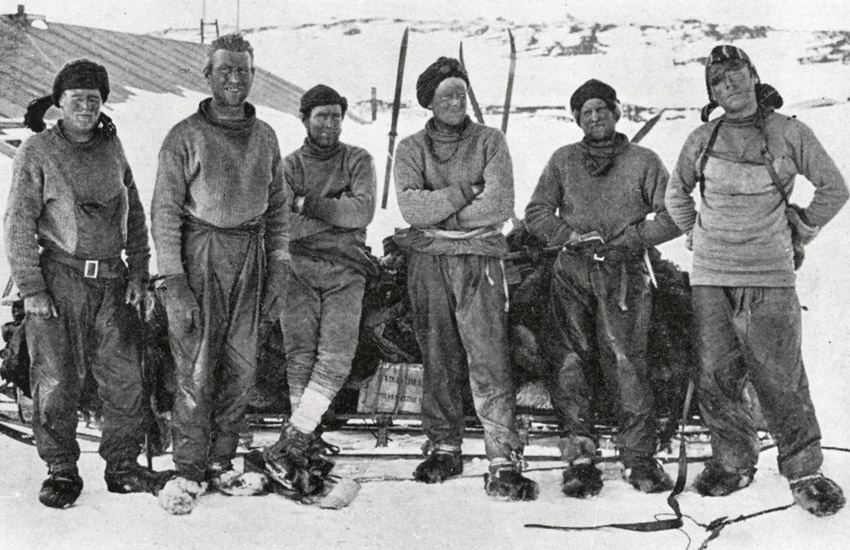 The Northern Party arrived
at Cape Evans on the 6th of November 1912
The Northern Party arrived
at Cape Evans on the 6th of November 1912
l to r: Dickason,
Abbott, Browning, Campbell, Priestley, Levick
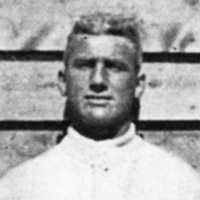
George Abbot
A seaman since the age of fifteen, an outstanding athlete and instructor in physical fitness, the physically largest of the men. His naval record has him as 5 feet 7 inches tall (170cm), the difference in height in photographs is because none of the men were very tall.
Abbot gave himself a very bad cut while butchering a seal severing the tendons to three fingers on his right hand.
Abbott had a nervous breakdown on the Terra Nova
on the way home and was briefly institutionalized on
arrival in England though was back in position in the
navy again by 1914.
more on
George Abbott
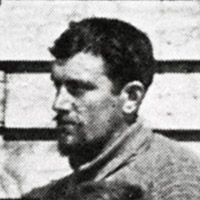
Frank Browning
Joined the navy at 18. He had suffered from enteric
fever in the past and had dysentery almost all the way
through the second winter only recovering when the continual
meat and blubber diet was changed on the march back
to Hut Point after a food depot left the previous summer
was found. Prior to this the party had discussed leaving
him with Levick at Granite Harbour while the others
went on and returned with medicine and suitable food,
the food depot and change of food almost certainly saved
his life.
more on
Frank Browning
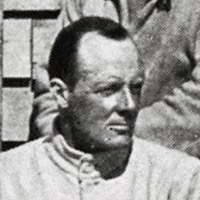
Victor Campbell
Born into a very well to do family, Campbell had been in the Merchant Navy and then the Royal Navy resigning in 1901 to live the life of a country gentleman (aged 26). The leader of the party, he had earned the nickname of the "Wicked Mate" on board ship because of his enthusiasm for cleanliness. The inability to clean anything must have been very difficult for him to deal with through the winter.
He is credited with bringing the party successfully through that terrible second winter still able mentally and physically to walk over 200 miles across Antarctica in early spring to safety. Rather than let the men descend into listlessness where the days, weeks and months just became a blur, he instigated routines with particular events on particular days as best could be achieved under the circumstances.
On arriving back at Hut Point, he was the most senior
remaining naval officer and assumed command of the expedition
and then of the Terra Nova.
more on Victor Campbell
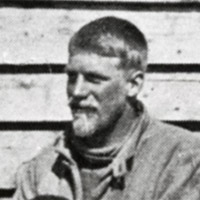
Harry Dickason
Went to sea at 16 and joined the Navy at 18. Known as an eminently practical man, Dickason could be relied on to make things work and improvise from whatever meagre materials were available.
He suffered from some sickness during the winter,
more so than most but not as bad as Browning.
more on Harry
Dickason
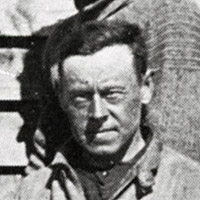
George Levick
Trained as a doctor, he joined the navy in 1902,
a specialist in physical training. In the first summer
at Cape Adare he made a study of the penguin colony
which he published as a book on his return. Second in
command of the Northern Party he was known for getting
on with all.
more on
George Levick

Raymond Priestley
The only civilian of the party a geologist who had previously spent two years in Antarctica with Shackleton on the Nimrod expedition.
He wrote a book about the Northern Party called "Antarctic
Adventure" on his return.
more on Raymond
Priestley
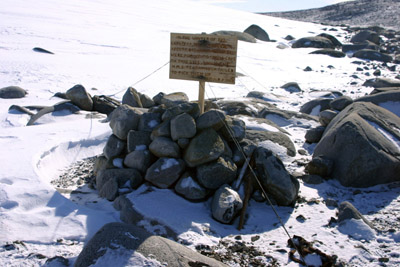
A weathered sign and stone cairn mark the site of 'Campbell's Igloo' on Inexpressible Island - 2005.
IN THE WINTER OF 1912,
CAMPBELL, PRIESTLEY, LEVICK, ABBOTT, BROWNING + DICKASON
WERE FORCED TO SNOW-CAVE
ON THIS SITE, WHEN THE
H.M.S. TERRA NOVA FAILED
TO PICK THEM UP
N.Z.A.R.P 1963
When a New Zealand team visited this spot in 1963, the first time since the Northern Party had left in 1912, there were still remnants: "..a seal skin roof supported by a ski pole and bamboo marker flag protruding from the snow drift".
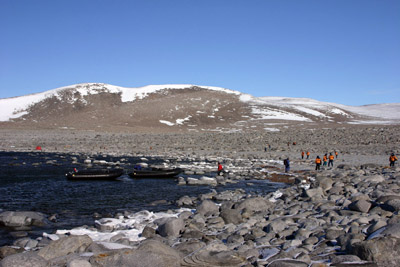
Evans Coves - Inexpressible Island - 2005
A tourist group visit the island. Note the field of granite boulders that would have to be negotiated every time any of the group went down to the shore from the ice-cave to hunt, butcher or retrieve penguins or seals. Difficult at the best of times, but very difficult in the howling katabatic winds that dominate the area during the winter months, not to mention the extra difficulty posed by the long dark of the permanent winter night.
"...the
road to hell might be paved with good intentions, but
it seemed probable that hell itself would be paved something
after the style of Inexpressible Island."
George Levick
Crew of the Terra Nova Expedition
Abbot, George Percy - 1,2,N
- Petty Officer, R.N.
Atkinson,
Edward L. - 1, 2, D, P, S - R.N. - surgeon, parasitologist
Balson,
Albert - 1, 2 - Leading seaman, R.N.
Bowers, Henry Robertson - 1, D, C,
Po - Lieutenant
Browning, Frank Vernon - 1,
2, N - Petty Officer
Campbell, Victor - 1, 2, N - Lieutenant,
R.N.
Cheetham, Alfred B. - Boatswain
(Bosun), R.N.R.
Cherry-Garrard, Apsley - 1,
2, D, C, S - Assistant zoologist
Crean,
Tom - 1, 2, D. P, S - petty officer, R.N.
Debenham,
Frank - 1, 2, iW, iiW - Geologist
Dickason,
Harry - 1, 2, N - Able Seaman
Evans,
Edgar - 1, iW,
Po - petty officer, R.N.
Evans, Edward R.G.R. - 1, D, P - Lieutenant,
R.N. "Teddy Evans" - second in command,
and Captain of the Terra Nova
Girev
(Geroff), Dmitriy - 1, 2, D, P, S - Dog driver
Gran, Tryggve - 1, 2, D, iiW, S - ski
expert
Lashly,
William - 1, 2, P, S - chief stoker, R.N.
Levick,
G. Murray - 1, 2, N - Surgeon, R.N.
McLeod,
Thomas F. - 1, 2 - Able seaman
Meares,
Cecil H. - 1, D, P - in charge of dogs
Oates,
Lawrence - 1, D,
Po - Capt. 6th Iniskilling Dragoons
Ponting, Herbert G. - 1 - Camera artist
Priestley,
Raymond E. - 1, 2, N - Geologist
Omelchenko,
Anton - 1 - Groom
Scott,
Robert Falcon - 1, D,
Po - Commander, R.N. -
Expedition leader
Simpson,
George - 1 - Meteorologist
Taylor,
T. Griffith - 1, iW, iiW - Geologist
Wilson,
Edward Adrian - 1, D, C,
Po - chief of scientific staff and
biologist
Wright,
Charles Seymour - 1, 2, iW, P, S - Physicist
Key:
1 - first winter
2 - second winter
iW - first western party
iiW - second western party
N - northern party
D - depot laying for south pole journey
P
- south pole party
C - winter journey to Cape
Crozier
S - search party for south Pole party
Po - reached South Pole
Robert Falcon Scott Books and Video

The Coldest March: Scott's Fatal Antarctic Expedition
by Susan Solomon
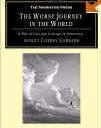
The Worst Journey in the World. Apsley Cherry-Garrard

The Voyage of the Discovery: Scott's First Antarctic Expedition
by Robert Falcon Scott, Ross MacPhee (Introduction), Fridtjof Nansen (Preface)

The Great White South: Travelling with Robert F. Scott's Doomed
South Pole Expedition by Herbert Ponting

Scott's Last Expedition: The Journals of Captain R.F.Scott

Edward Wilson's Antarctic Notebooks
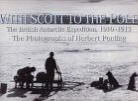
With Scott to the Pole
Herbert Ponting, illustrated

Discovery Illustrated: Pictures from Captain Scott's First Antarctic Expedition

Captain Scott by Sir Ranulph Fiennes

90 Degrees South: With Scott to the Antarctic (1933) DVD

History Chapters: Roald Amundsen and Robert Scott Race to the South Pole. Ages 4-8

Diary of the "Terra Nova" Expedition to the Antarctic, 1910-12


